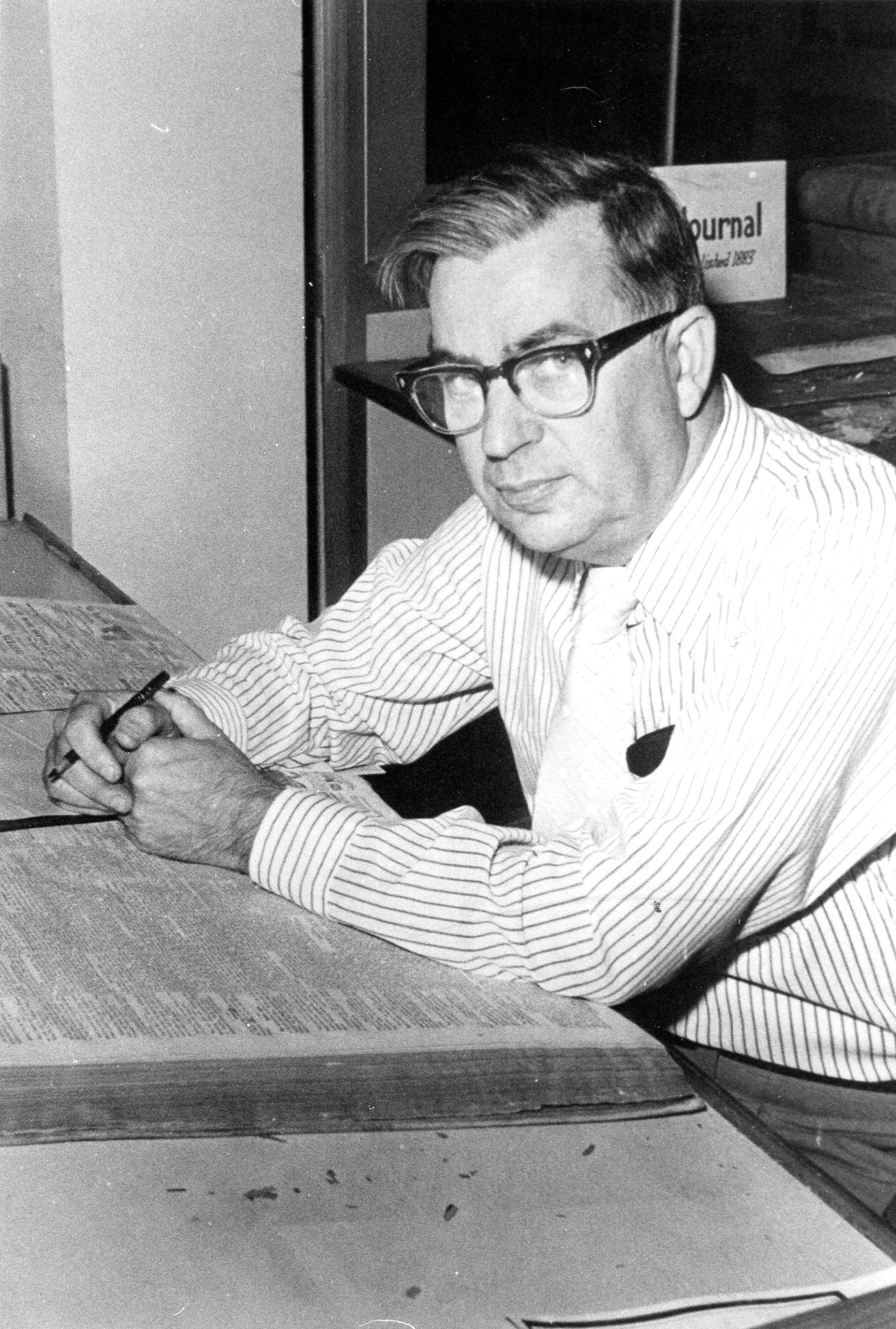Historian Carl Landrum brought Quincy to life

From 1965 through 2003, The Quincy Herald-Whig published a
weekly column by Carl Landrum which related the history of Quincy and Adams
County. Landrum told of the individuals and families, businesses and
organizations, disasters, and events which made up the fabric of our community
for nearly two centuries. Landrum’s nearly four-decade effort came to an end
with his death eight years ago.
Now, the Historical Society of Quincy and Adams County is
coordinating the efforts of volunteer contributors to relate once again local
history to the readers of the Quincy Herald-Whig. Artifacts in the collection
of the Historical Society of Quincy and Adams County will be featured as the
columns tell of the people and events which made our community what it is
today. The Historical Society’s archives contain a wealth of information in the
form of photographs, diaries, letters, books, and pamphlets, as well as the
personal effects of many of our early residents.
Some will provide source material for upcoming articles while others will provide a visual image accompanying the article.
Long-time Herald-Whig editor Allen Oakley once told Carl
Landrum that he could find no other newspaper in the United States which
featured a weekly column on local history — certainly not one which had run
continuously for decades.
A musician by education and training, Landrum’s interest in
history was whetted by his participation in the Tri-State Civil War Roundtable
during the war’s centennial, 1961-1965. After writing several Civil War
articles for the Quincy Herald-Whig, Landrum was asked by the paper’s editor
and fellow Tri-State Civil War Roundtable member, Art Higgins, to write a local
history column each week. Thus, “From Quincy’s Past” was born in 1965. The next
year, Landrum’s first of 11 books, “Quincy and the Civil War,” appeared.
In writing his weekly column, Landrum spent every Monday
morning reading through the old files at The Herald-Whig office. He worked on
several articles at one time, keeping numerous notes as attention was drawn to
new information. He utilized city directories for factual information but
enjoyed adding angles of human interest and patronization when the opportunity
arose. His favorite subjects included music in general and circus bands in
particular, as well as parades, steamboats, railroads, circus performers,
factories, and businesses.
In writing so many articles, some topics were repeated, but
Landrum had a policy of not writing on the same topic for at least 10 years.
The only exception was when a business was celebrating an anniversary and
requested an article. Landrum then sought new information or wrote from a
different angle when obliging these requests.
Sometimes Landrum turned to his friends, T.E. Musselman,
Father Landry Genosky, Bill Lyle and Carl Hagler for information and ideas. He
was encouraged throughout the years by the support and friendship of Art
Higgins, Allen Oakley, and Joe Conover at The Herald-Whig.
Carl Landrum was a Quincy native,attending Franklin and
Webster schools before graduating from Quincy High School and Quincy
College. An army veteran and musician, he taught in Ursa and Lewistown, Mo.,
before becoming the long-time band and orchestra director at Quincy Notre Dame
and director of the Quincy Park Band.
Of his 11 books, Landrum was particularly proud of “Quincy — A Pictorial History” published in 1990. Its nearly 200 photographs are a record of the city’s history with accompanying narrative.
For many years, Landrum researched and wrote his weekly
columns himself, but as his eyesight deteriorated, he relied on his wife,
Shirley, to read small print and type his manuscripts.
Throughout his research, Landrum was frustrated in his
attempts to locate a photograph taken in October 1858 of the Lincoln-Douglas
Debate in Washington Square. He felt that with several photographers in Quincy,
at least one would have recognized the importance of the event and recorded it
for future generations. He ran into similar frustrations when he sought
information on a number of small businesses which flourished briefly, but left
few written records after their demise. He encouraged contemporary businesses
and individuals to write their histories so these wouldn’t be lost to future
generations.
In spite of the small setbacks, Carl Landrum instilled an
interest and love of local history in countless readers of his columns and
books. He breathed life into the people and events of a by-gone era as he kept
Quincy’s history alive in his weekly columns.
Those individuals who will be following in Landrum’s
tradition on these pages in the months ahead have a worthy example to follow.
The authors of the new column have Carl Landrum’s desire to share local history
with The Herald-Whig’s readers, yet they also plan to use fresh approaches to
reveal fascinating stories. Although they bring a variety of writing styles and
interests, all of the writers will be striving to bring history to life.
Phil Germann is a retired executive director of the
Historical Society, having served for 19 years. He is a former history teacher,
a local historian and speaker, a member of several history-related
organizations, and a civic volunteer.
Sources
Landrum, Shirley. Interview by Author. Quincy, IL, April, 2011.






